Alphacool, a well-known brand in PC cooling solutions, recently launched the Apex Stealth Metal range of cooling fans. Prior to its launch, the new fans generated a lot of buzz within the PC community, in part due to the unfortunate misconception that the entire fan would be made of metal.
However, regardless of whether they are made entirely of metal or not, these fans are distinguished by their unique construction, which combines a metal frame with plastic parts that are separate from the metal. This design choice not only contributes to the aesthetics of the fan, but also plays an important role in its operational efficiency.
The range consists of two different models: Apex Stealth Metal 120 mm and Apex Stealth Metal Power 120 mm, the main difference being their maximum rotational speed. The former can reach up to 2000 RPM, while the latter is designed for more demanding applications and can reach a staggering 3000 RPM. Available in four colors—white, matte black, chrome, and gold—these fans blend style and functionality, making them a versatile choice for a variety of PC builds.
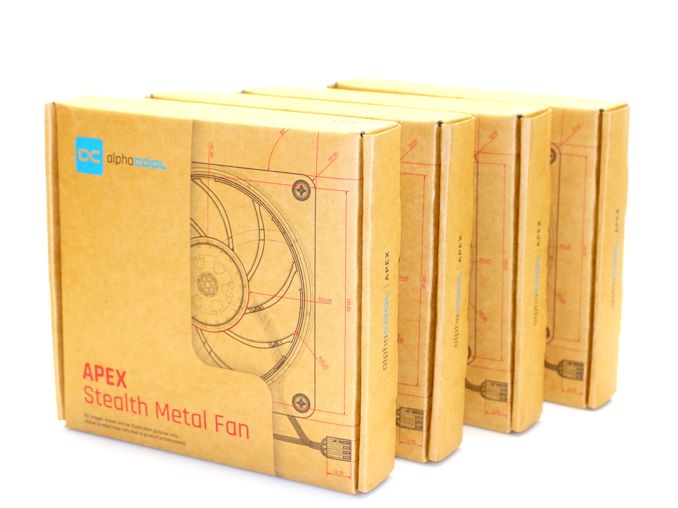
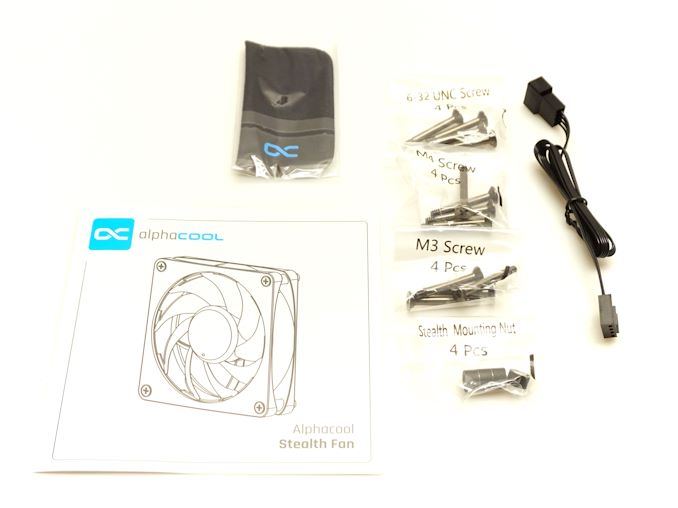
AlphaCool provides each fan with a cardboard packaging that includes high-quality screws, an extension cord, and a small soft cleaning cloth. A cleaning cloth may seem redundant, but it comes in handy for fans of the Chrome and Gold editions, as even the slightest touch can leave telltale fingerprints on the frame. An extension cord is also necessary because the fan’s cable is short and has male and female connectors. This allows multiple fans to be connected in parallel to each other (daisy chained) and just one extension cord can be used to power the entire group – however, users need to be aware of the maximum amperage the power supply can handle, otherwise they will be unusable. There is a risk of damaging the motherboard/fan controller. A typical performance/gaming motherboard can power three Apex Stealth Metal fans from a single header without any issues.
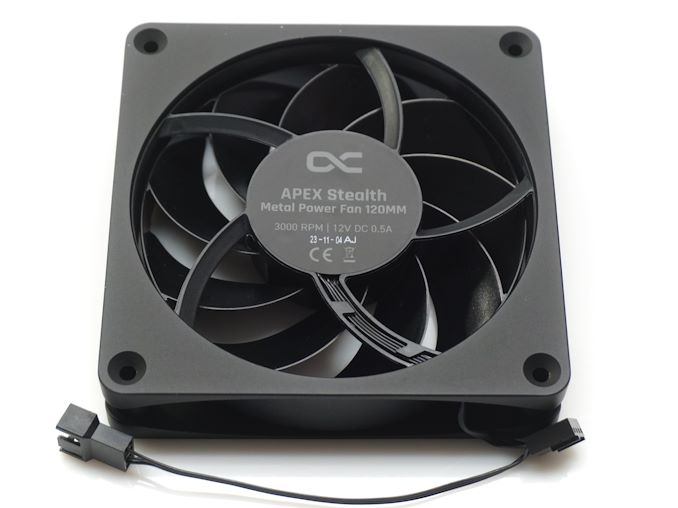

AlphaCool uses a Hydrodynamic Bearing (HDB) engine, which is known for its durability and quiet operation. They are not the best fan engine configuration, but for performance fans, HDB configurations are cost effective. Additionally, the addition of wide PWM (Pulse Width Modulation) control adds a layer of flexibility, allowing users to adjust fan speed as needed. Notably, these fans are capable of stopping completely if used with a PWM controller that supports zero-rpm mode, a feature that is particularly useful in low-heat situations or when looking to minimize noise.
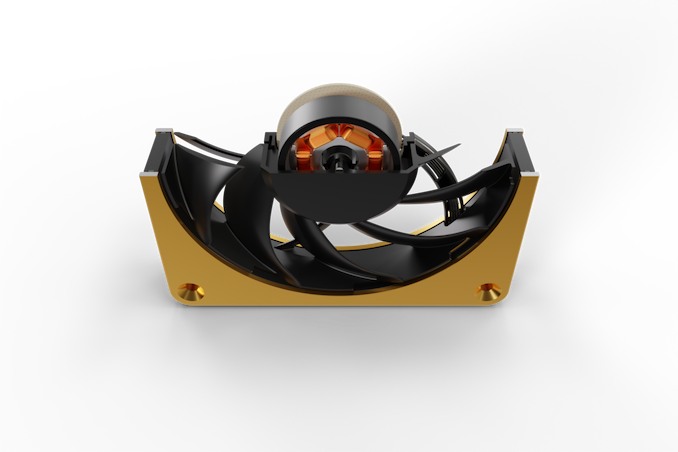
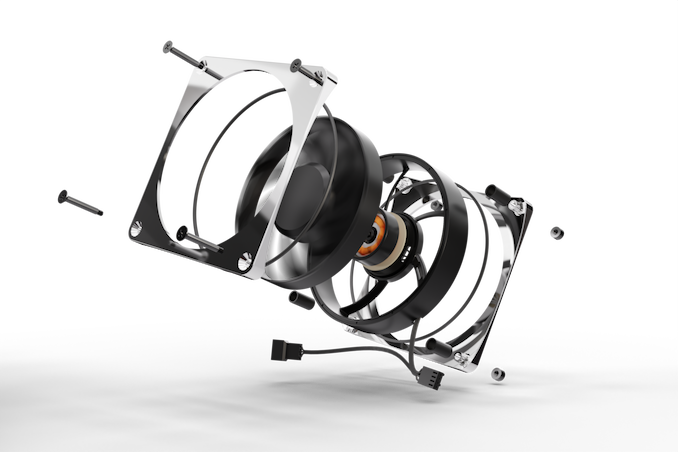
Looking at the bigger picture, the inevitable question is: “Why isn’t the entire fan made of metal?” Simply put, making a fan’s moving parts out of metal leads to countless engineering and safety issues. Not to mention that due to the greater metal mass, it results in a significant increase in power requirements and energy consumption, all without any meaningful performance gain. On the other hand, using plastic for the fan’s blades and hub, while using metal for the frame itself, creates the best balance between material types, improving the fan in areas where metal can be a benefit rather than a detriment.
Fan test method
We are testing the fans using an Extech HD350 differential pressure gauge, an Extech AN200 anemometer, and a custom 3D printed device designed for this specific purpose. This device has a simple but effective shutter mechanism that allows us to test the fan for unobstructed (maximum) volumetric flow, the fan for fully obstructed (maximum static) pressure, and multiple points in between, allowing us to compose a practical PQ for any fan performance chart. RPM readings are taken with the fan running unobstructed (maximum flow) because fan speed varies based on airflow resistance as well as the design of the fan blades.
For noise measurements we use an Extech HD600 high sensitivity SPL meter. The fan noise was measured at 15 centimeters away, rather than the 1 meter required by IEC certification, as this distance is too large to measure the difference between near-silent products. Note, however, that we measure noise levels with unimpeded fan flow and the fan being as isolated from the environment as possible. Adding fan grilles, installing coolers, and any other obstructions will increase the amount of noise produced, as both aerodynamic and vibrational noise are added to the environment.
Test results and conclusions


From the chart above, we can see that both the 2000 RPM and 3000 RPM versions of the Apex Stealth Metal fan perform as expected from their official specifications. Both fans exceeded the specified maximum pressure and flow figures, even if only slightly. The PQ curve is nearly linear, indicating that the balanced design results in good all-around performance, allowing the fan to be used effectively in any application. We should point out that the Apex Stealth Metal and Apex Stealth Metal Power are exactly the same fans, the only difference is their operating range. Apex Stealth Metal Power runs at 2000 RPM and produces the exact same performance figures as Apex Stealth Metal.
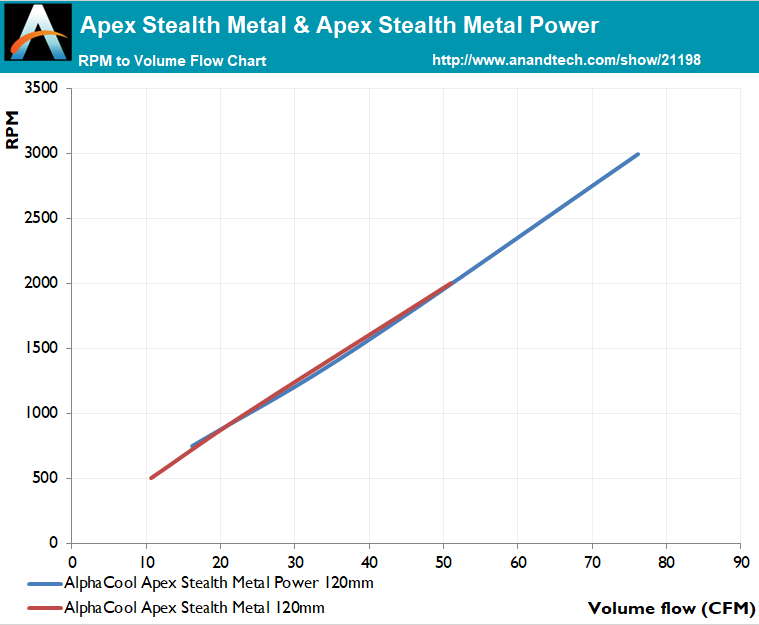
However, jacks of all trades often lead to incompetence, which means that Apex Stealth Metal fans have a hard time competing against application-specific designs in specific scenarios. The noise figure is relatively low, but not significantly better than any quality similar fan design. What we noticed is that there is no vibration transmitted to the fan frame, which indicates excellent balance and decoupling capabilities, compared to the low speed fans that can get noisy when attached to large bodies (mainly cases and radiators) significantly reduced. Moderate quality fans, especially those with ball bearing motors.


From the chart above, we can see how the AlphaCool Apex Stealth Metal fan compares to the top competition. We purposely chose Corsair’s MagLev ML120 and Noctua’s NF-A12x25 fans because they are commonly used in liquid coolers and air coolers respectively. The Apex Stealth Metal Power towers over them all due to its extremely high revs, forcing its way to the top of the charts. A lot of information can be gained by studying the second chart, which shows the Apex Stealth Metal’s stock speed of 2000 RPM compared to the other two 120 mm fans. We can see that its overall performance is similar to that of the NF-A12x25, slightly better when the airflow resistance is high, but less so when the airflow resistance is negligible, but at the same time, it is also noticeably quieter. While the NF-A12x25 isn’t Noctua’s best 120mm fan, beating one of their products is a feat in itself. Corsair’s ML120 MagLev fan lags significantly behind due to its lower RPM, although its noise output falls somewhere between the other two products.
The Apex Stealth Metal fan is a product designed for the average consumer who wants good performance, superior quality and unique aesthetics regardless of intended use. It’s been over a decade since we last saw a fan with a metal frame, and the Apex Stealth Metal is the only fan with a metal frame that we’re aware of currently available from a reputable manufacturer. However, the retail price of the Apex Stealth Metal fan is quite high (€30/$29), significantly reducing the potential market to those who want a specific aesthetic and/or a very high-quality all-around fan.
Finally, from a purely practical perspective, the very wide PWM range actually makes the 2000 RPM version redundant. Unless there’s a significant price difference between the two versions, it would make more sense to buy the 3000 RPM version and adjust its speed to suit personal preference while having the extra space, even if it’s not currently necessary.